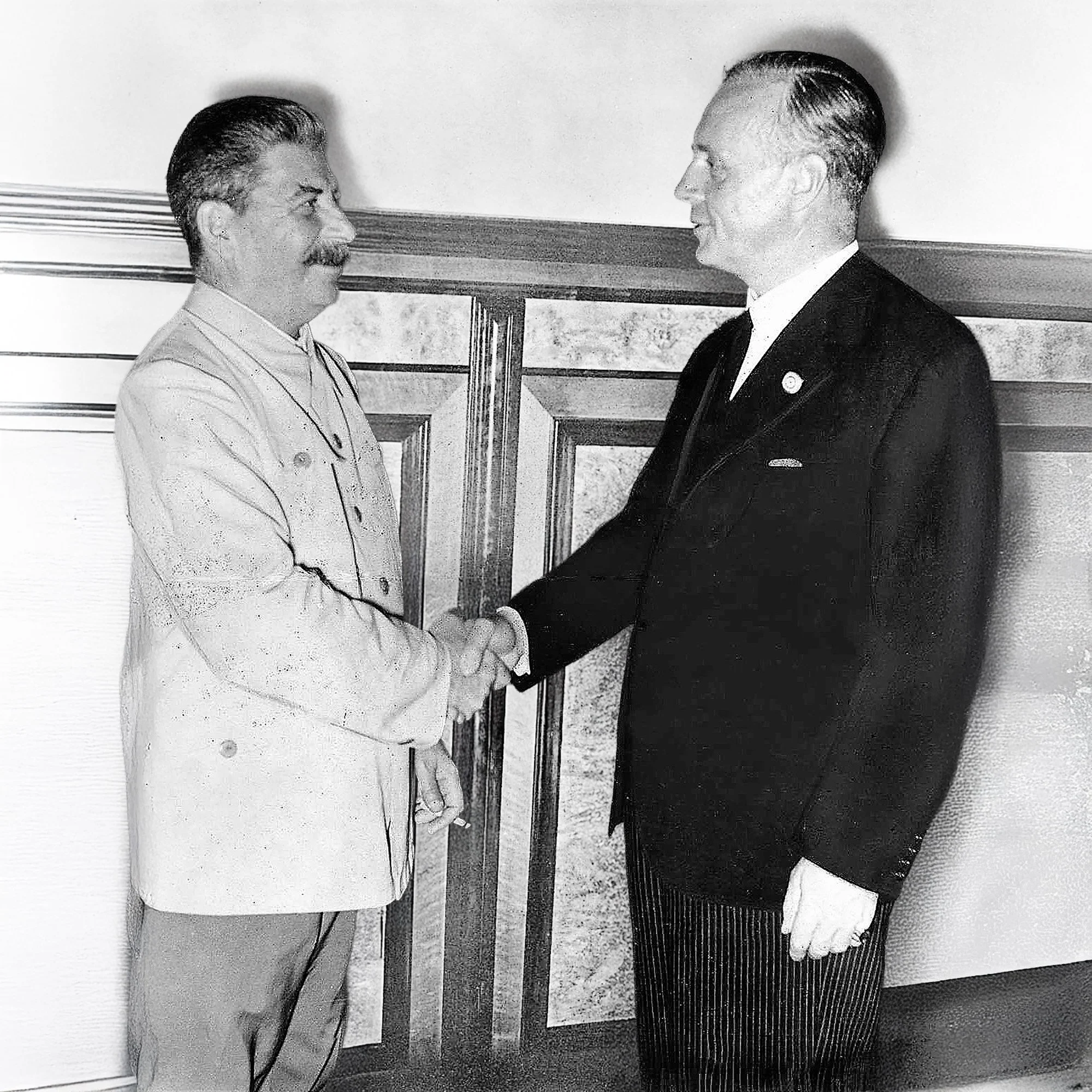Pact with the Devil, Joseph Stalin shakes hands with German Foreign Minister Joachim von Ribbentrop at the Kremlin, Moscow, 1939. Based on photo: Bundesarchiv, Bild 183-H27337 / CC-BY-SA 3.0 DE.
The Second World War was both a catastrophe and a crucible for the Soviet Union. It transformed the USSR from an embattled revolutionary state into one of the two global superpowers — but at a staggering human cost.
The Pact with the Devil
In August 1939, the world was stunned by the Molotov–Ribbentrop Pact. The Soviet Union, sworn enemy of fascism, signed a non-aggression treaty with Nazi Germany. A secret protocol divided Eastern Europe into spheres of influence. When Germany invaded Poland from the west on September 1, the Red Army marched in from the east two weeks later, seizing territory promised in the pact. Within a year, the USSR had annexed the Baltic states and parts of Romania, and waged a bitter war against Finland in the Winter War of 1939–1940.
Operation Barbarossa: The Shock
At dawn on June 22, 1941, Germany launched Operation Barbarossa, the largest military invasion in history. Three million German soldiers, supported by allies, surged into Soviet territory. Stalin had ignored multiple warnings from Western intelligence and his own spies, convinced Hitler would not break the pact so soon. The result was chaos: Soviet forces were encircled, millions captured, and vast swathes of land overrun in the first months.
A War of Survival
Yet the Soviet Union did not collapse. Moscow did not fall. The Soviet leadership relocated industry east of the Urals, away from German bombers. Ordinary citizens endured unimaginable hardship — cities under siege, villages burned, families torn apart. The Siege of Leningrad lasted 872 days, killing over a million through starvation, shelling, and cold. The Battle of Stalingrad (1942–1943) became the turning point: a brutal, house-to-house struggle that ended with the surrender of an entire German army.
The Road to Berlin
From Stalingrad onward, the Red Army went on the offensive. In 1944, Operation Bagration annihilated Germany’s Army Group Centre, liberating Belarus and pushing west. Soviet troops advanced through Poland, Romania, Hungary, and into the heart of Germany. On May 2, 1945, Berlin fell to Soviet forces, and on May 9, the USSR celebrated Victory Day.
The Human Cost and Political Gain
The Soviet Union emerged victorious, but the toll was staggering: at least 20 million dead, countless wounded, and vast destruction of towns, farms, and infrastructure. Yet geopolitically, the USSR gained enormous influence. Communist governments, backed by Soviet military presence, took power across Eastern Europe. The wartime alliance with Britain and the United States soon gave way to suspicion and rivalry — the Cold War was already germinating.
Further Reading:
Richard Overy – Russia’s War (1997)
Antony Beevor – Stalingrad (1998)
Catherine Merridale – Ivan’s War (2006)
Evan Mawdsley – Thunder in the East (2005)

